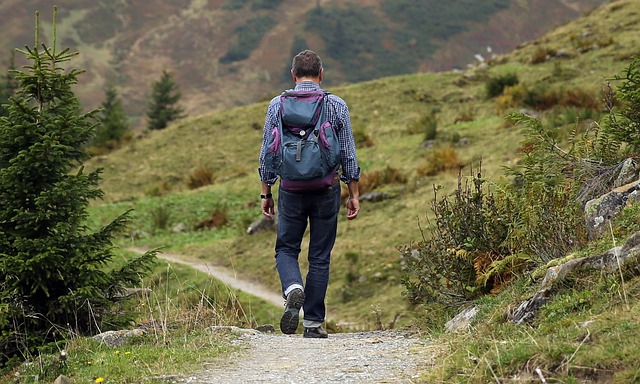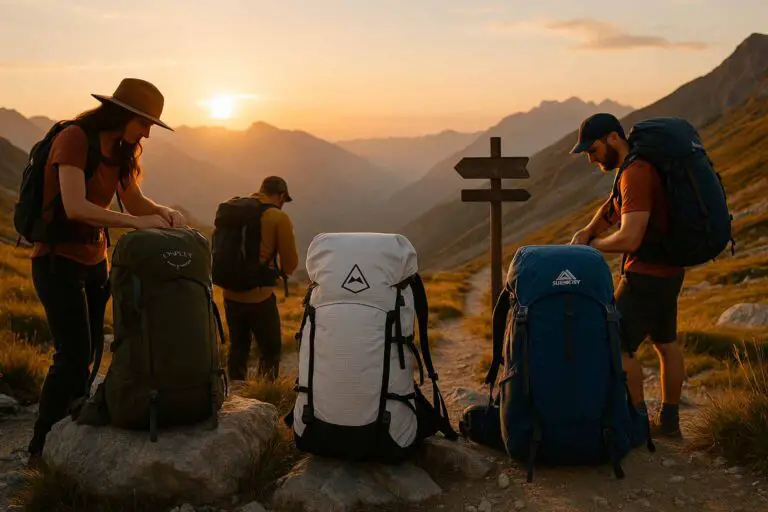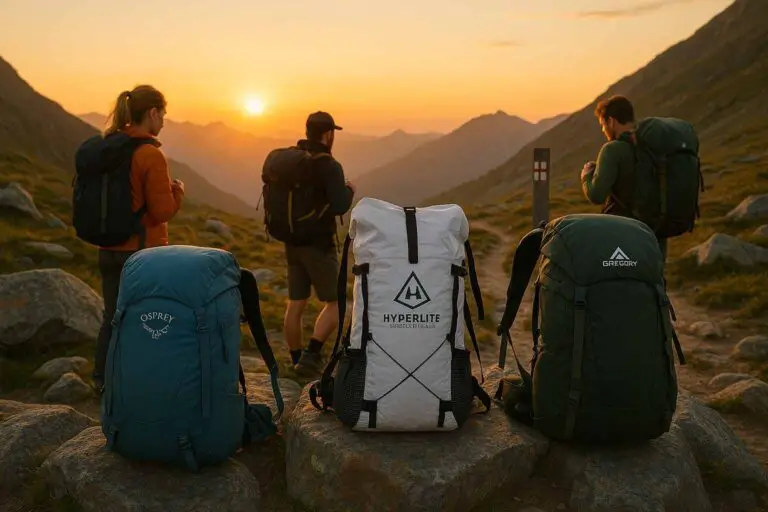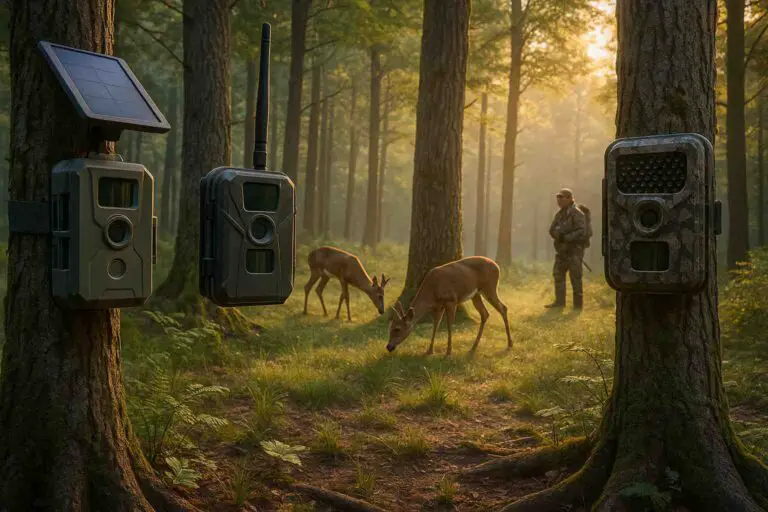Hiking is a beloved outdoor activity that offers a wealth of physical and mental benefits. But for those looking to build and strengthen their calf muscles, hiking is more than just a scenic adventure; it’s a fantastic way to sculpt and tone those lower leg muscles.
Yes, hiking can effectively build calf muscles. Uphill hikes challenge your calves as they lift and propel your body, while downhill hikes require calf engagement to control your descent. These repetitive movements lead to calf muscle growth and strength.
In this comprehensive article, we will explore the science behind calf muscle development during hiking and provide practical tips on maximizing your results.
The Science of Hiking and Calf Muscle Growth
Hiking is an excellent way to build muscle, especially in your calves. When you hike on uneven terrain, your body has to adapt and maintain balance by engaging various muscles throughout the lower body. The calves, composed of the gastrocnemius and soleus muscles, are particularly active during these challenging conditions.
Gastrocnemius
The gastrocnemius is the larger, more visible part of the calf responsible for plantar flexion (pointing the toes) and knee flexion (bending the knees).
Soleus
Beneath the gastrocnemius lies the soleus muscle, which also contributes to plantar flexion.
When hiking uphill or navigating obstacles, these calf muscles contract repeatedly, leading to increased strength and size over time. This constant engagement not only improves overall leg power but also significantly contributes to the development of well-defined calves.
(Read this post to discover how hiking can build not just calves’ muscles but also other muscles. Can Hiking Build Muscle? The Muscle-Building Power Of Hiking)
Benefits of Building Strong Calves through Hiking
Beyond aesthetics, strong calf muscles offer a range of benefits:
1. Enhanced Stability and Balance
Strong calf muscles are crucial for maintaining stability and balance, both on and off the trail. They help prevent ankle sprains and reduce the risk of falls, especially on uneven surfaces.
2. Improved Hiking Performance
As your calf muscles become stronger, you’ll find it easier to conquer steep ascents and descents. Your ability to power through challenging terrain will improve, enhancing your overall hiking experience.
3. Reduced Risk of Injuries
Weak calf muscles can contribute to various lower leg injuries, including Achilles tendonitis and shin splints. Strengthening your calves can reduce the risk of these common hiking-related injuries.
4. Better Endurance
Calf muscle endurance is crucial for long hikes. Strong calves can help you hike for more extended periods without experiencing excessive fatigue.
How Hiking Activates Calf Muscles
Hiking on uneven surfaces requires your body to expend extra effort to maintain balance and stability, activating the calf muscles as they work to stabilize the ankle joint. Studies have shown that traversing rough terrain can significantly increase calf muscle activity compared to walking on level ground.
Varying Intensity Levels
Hiking allows you to adjust the intensity level easily by choosing different trails or inclines. Uphill hikes place more demand on your calf muscles, leading to increased strength and growth. The steeper the incline, the more intense the calf workout becomes.
Natural Resistance Training
Carrying a backpack while hiking adds extra resistance training for your leg muscles, including your calves. As you progress with longer hikes and heavier loads, this additional resistance promotes further growth in these muscles.
Toning Other Leg Muscles Simultaneously
While hiking predominantly targets the calf muscles, it engages several other leg muscles:
– Quadriceps
These muscles at the front of your thighs are heavily engaged during hiking, especially when climbing uphill or navigating rocky terrain.
– Hamstrings
The hamstrings, located at the back of your thighs, work in opposition to your quads to help propel you forward during hiking.
– Glutes
Your glute muscles, the largest and most powerful muscles in your lower body, play a key role in hiking by extending your hips and pushing your body up hills.
– Hip Flexors
The muscles that connect your legs to your hips, your hip flexors, are activated as you lift your legs to climb hills or navigate obstacles.
In essence, hiking is an enjoyable and effective way to build bigger calves while also improving overall leg strength and cardiovascular fitness.
Choosing the Best Terrain for Building Calves
If you’re aiming to build bigger calf muscles while hiking, selecting the right terrain is crucial. Here are some of the best types of terrain for targeting calf development:
– Inclines and Hills
Hiking uphill engages your calf muscles intensely as they work harder with each step to propel you forward and upward. Seek out trails with steep inclines or rolling hills for maximum calf-building benefits.
– Rough Terrain
Uneven surfaces like rocky paths or trails covered in roots force your body to constantly adapt its movements, engaging various muscle groups, including the calves.
– Sand Dunes or Beaches
Walking on sand requires more effort from your leg muscles compared to solid ground because it shifts beneath your feet. This increased resistance helps strengthen not only your calf muscles but also other lower body muscles.
To further maximize calf development during hikes, ensure you wear proper footwear that supports ankle stability while allowing natural foot movement without hindering performance.
Nutrition to Support Calf Muscle Growth
To get the most out of your hilly hikes, it’s essential to provide your body with the right nutrients. A balanced diet plays a crucial role in muscle development, including your calf muscles. Here are some nutritional choices that are optimal for building and maintaining strong calf muscles:
– Protein
Protein is essential for muscle repair and growth. Incorporate lean sources of protein like chicken, turkey, fish, lean beef, tofu, and legumes into your diet to support calf muscle development.
– Carbohydrates
Carbohydrates provide the energy needed for hiking and muscle-building workouts. Opt for complex carbohydrates like whole grains, fruits, and vegetables to sustain your energy levels.
– Hydration
Proper hydration is essential for muscle function. Dehydration can lead to muscle cramps, including calf cramps. Ensure you stay adequately hydrated during your hikes, especially in hot weather.
– Supplements
Consider adding supplements like branched-chain amino acids (BCAAs) or creatine to your diet to support muscle growth and recovery.
Supplementary Strength Training Moves
While hiking alone can be an effective way to build calf muscles, supplementary strength training exercises can enhance your calf development even further. Here are some exercises to consider incorporating into your fitness routine:
– Calf Raises
Stand on the edge of a step or platform with your heels hanging off and raise your heels as high as possible before lowering them below the step. This exercise targets the calf muscles directly.
– Seated Calf Raises
Sit on a bench with a weight on your thighs and your feet on a calf raise machine or sturdy surface. Raise your heels as high as possible before lowering them below the starting position.
– Calf Presses
Use a calf press machine at the gym or a calf press attachment on a leg press machine to perform calf presses. This exercise provides resistance to your calf muscles, promoting growth.
Incorporate these strength training moves into your routine, preferably on days when you’re not hiking, to give your calf muscles the extra attention they need.
Conclusion
Hiking offers an incredible opportunity to build and strengthen your calf muscles while enjoying the great outdoors. The combination of challenging terrains, varying intensity levels, and natural resistance training makes hiking an effective calf-building exercise. Along with strong calves, you’ll gain enhanced stability, better hiking performance, and reduced risk of injuries.
To make the most of your calf-building hikes, choose terrains that challenge your muscles, pay attention to nutrition, and consider incorporating supplementary strength training exercises. So, lace up your hiking boots, embark on those adventurous trails, and watch your calves transform as you hike your way to better calves and a healthier, more active lifestyle.








